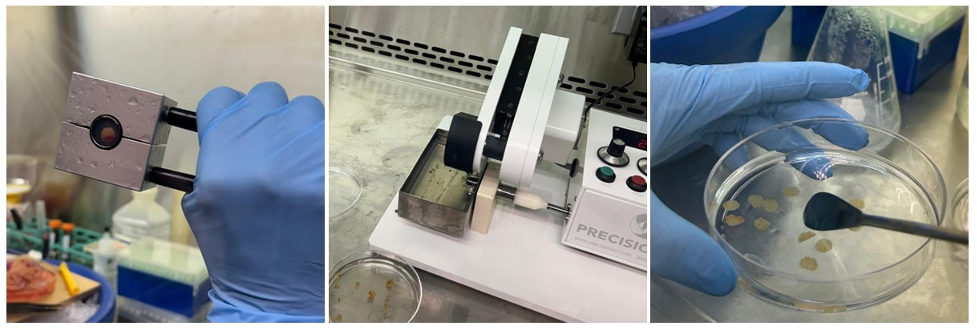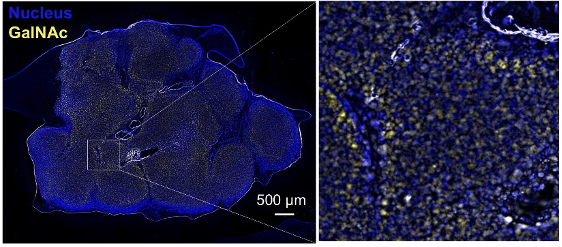Lab Spotlight: Dr. Gordon Jiang’s Lab at BIDMC
- Original post date:
Share on social
Pioneering RNA Therapeutics for Liver Diseases
Dr. Gordon Jiang, a transplant hepatologist and physician-scientist at Beth Israel Deaconess Medical Center and Harvard Medical School, leads a research program focused on tackling some of the most challenging aspects of liver disease. His lab is dedicated to understanding the mechanisms behind liver failure—especially the role of transcriptional regulation in cholesterol metabolism—and translating these insights into next-generation therapies.
One of the Jiang Lab’s major goals is to develop RNA-based therapeutics that can precisely modulate hepatocyte function. These innovations have the potential to treat conditions such as alcoholic hepatitis and acute-on-chronic liver failure—serious illnesses that currently lack effective treatments.
Precision-Cut Liver Slices (PCLS): A Powerful Platform for RNA Therapy Development
Because RNA therapeutics are often species-specific, human-relevant models are critical for their development. To meet this need, the Jiang Lab has refined a robust workflow for generating precision-cut liver slices (PCLS) from both healthy and diseased human livers—leveraging BIDMC’s strong liver transplant program.
Using the Compresstome vibratome from Precisionary Instruments, the team prepares intact liver slices within a tight two-hour window from operating room to incubator. Their workflow includes tissue preservation, slicing, recovery, and culture, enabling long-term slice viability—up to 14 days—while maintaining liver-specific gene expression and metabolic function (Figure 1).

Figure 1. Workflow for generating precision-cut liver slices (PCLS) from human liver transplant tissue. Left: Human liver cores are embedded in low-melt agarose using a Compresstome specimen tube and chilling block.Center: Agarose-embedded tissue is sectioned using the Compresstome VF-510-0Z vibratome with an autoclavable stainless steel slicing tray. Right: Uniform PCLS sections are collected and prepared for incubation, culture, and downstream analyses.
PCLS in Dr. Jiang’s lab retain high ASGR expression and demonstrate zonated uptake of GalNAc-conjugated molecules, making them an ideal platform to study GalNAc-mediated RNA delivery, a key strategy in targeted RNA therapies for liver disease (Figure 2).

Figure 2. Functional validation of PCLS for RNA therapeutic development. PCLS generated in Dr. Jiang’s lab maintain high ASGR expression and show zonated uptake of GalNAc-conjugated molecules—key features that support their use in studying GalNAc-mediated RNA delivery for liver-targeted therapies.
Collaboration and Innovation at the Preclinical Liver Research Center
Beyond their own research, the Jiang Lab is committed to collaborative science. Through the Preclinical Liver Research Center at BIDMC—supported by the Massachusetts Life Sciences Center (MLSC)—the lab offers access to its PCLS platform to both academic and industry partners. Ongoing efforts focus on improving culture conditions to better mimic disease phenotypes and enhancing the model’s relevance for therapeutic screening and target validation.
The Jiang Lab exemplifies how precision tools, translational models, and team science can come together to accelerate breakthroughs in liver disease research and RNA-based therapy development.

Figure 3. The Jiang Lab at Beth Israel Deaconess Medical Center. Dr. Gordon Jiang and his research team, dedicated to advancing RNA-based therapeutics and liver disease modeling through innovation, collaboration, and precision tissue science.
Share on social
